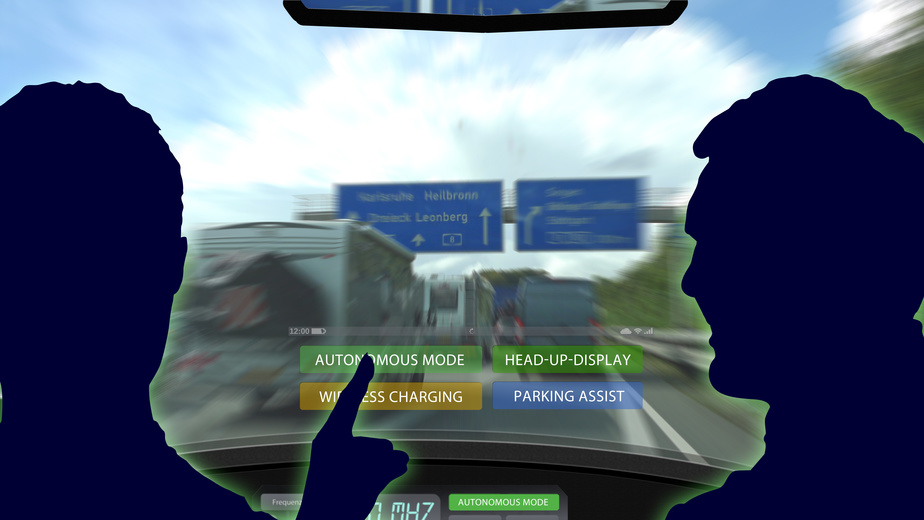Let’s be honest: in this age of smartphones & Co. the family car remains one of our favorite high-tech toys. We had to invest a great deal of time and money before we could use it and call it our own. After we’d spent hours cramming the theory, we moved on to driving practice, first on a training simulator, then in a fenced-off area and finally on the road. In a lot of ways it was similar to training as a plant operator in the process industry.
Even once you’ve passed your test, that still applies. The speedometer, gas pedal and road signs are to a driver what measuring instruments, controllers and boundary conditions are in an industrial plant. And the potential hazards which may be encountered if something doesn’t go according to plan are another thing these two activities have in common. So the situation can very easily become dangerous and expensive.
Today’s cars have a whole series of assistance systems built into them to avoid these hazards, or at least reduce them to a minimum. We generally have no reservations – whether conscious or not – about using them.
In the process industry, too, assistance systems are increasingly widespread, depending on their function and the geographical location. This article is the first in a mini-series aimed at showing you what kind of assistance systems exist, what they’re typically used for and the value they can add for you.
“Smart” assistance systems
When we talk about assistance systems in this context, it’s not systems like the brake booster we’re referring to. We’re more interested in the “smart” assistants such as anti-lock braking or lane departure warning. Like so many novel technological devices, they’re rapidly becoming commonplace in automobiles. Not that we users actually asked for them. But car manufacturers’ feature options catalogs leave no room for doubt. The list of supplementary assistance systems is getting steadily longer. Of course, modern cars can still be navigated through heavy traffic without an on-board computer, a lane departure warning system, emergency brake assist or cruise control with a distance detection sensor. Yet no-one would dispute how much extra safety and efficiency these various assistance systems give you.
In the beginning
One of the first ever assistance systems came into being in the early seventies of the last century: traffic announcements, known today as TP*. Drivers are provided with recommendations regarding their future behavior, which they can use to reconsider their intended course of action. If you weren’t familiar with the local area, that was no easy matter in the past, even with a map. The announcements weren’t always right up to the minute, but they were progress nevertheless.
Today
Modern GPS devices make all of this far easier: the information is brand new and you can leave your old road map at home on the shelf. I simply enter my destination together with various basic preferences (for instance, no toll roads, no ferries etc.) and the GPS computes the best route in an instant. In fact, it often gives me a choice between three different routes – “fastest”, “shortest” and “eco” – and lets me decide for myself.
In other words, it provides me with advice on the best way to reach my destination under given conditions. And that’s not all: its recommendations are dynamically adapted (TMC*) in the course of my journey. Regardless of any unforeseen disruptions along the route, I still get to where I want to go as quickly as possible. All I have to do myself is actually drive the car – though now that the first driverless cars have appeared on the scene, the future has begun here too.
ABS and ESC are two well-known assistance systems without which twenty-first century cars would be unthinkable. Their contribution to road safety is undisputed. It was much the same story with safety belts, except that they had a far harder time becoming established. The reason is simple: “early” safety belts were “difficult” to use whereas ABS and ESC are not. If it wasn’t for the buttons on the dashboard, we drivers wouldn’t normally even be aware. Without us having to do anything, they render valuable assistance in the background – continuously and unobtrusively – as they stop us from skidding and swerving.
Summary
Some systems support me in real time, either automatically or interactively: they respond in a particular situation (ABS), notify me of a specific condition (tire pressure) or make me a recommendation (information on my current consumption or advice to change gear). Others remind me of a planned event in the future (GPS device with TMC), in other words they are “predictive”.
Systems like ABS and ESC operate fully automatically (as long as I don’t turn them off, that is). In short, they work without any actions on my part as soon as the boundary conditions (sharp braking, risk of skidding) are fulfilled. If ESC is active, therefore, it could be described as an online closed-loop assistant because it runs continuously (online) and intervenes automatically (closed-loop). Other systems are interactive and wait for me to respond, for instance by countersteering if my semiautomatic lane departure warning system issues an alert. This latter system is also online but because it doesn’t intervene automatically, we refer to it as open-loop.
So how do assistance systems benefit us?
When it comes to cars, safety is without question the main reason why assistance systems are fast becoming the norm. This is not surprising, as a simple risk analysis of driving-related hazards shows. The sheer volume of cars on the roads and the potential dangers to other road users are high. A glance at the number of road traffic accidents and fatalities only serves to further underline this. Yet these figures are on the decline and there is a clear overall trend in the right direction.
The rising cost of fuel and the increased awareness of environmental issues are key drivers of efficiency improvements. Unfortunately, these improvements are not as significant as they might be. Both the assistance systems themselves and our desire for greater comfort and convenience are real energy guzzlers. What’s more, “driving pleasure” is still just as prevalent an attribute as ever, as reflected in the unbroken sales success of models with large and powerful engines. In spite of this, assistance systems have helped to make driving more efficient today than at any time in the past.
Finally, we should also mention the issue of availability. This is probably the least important factor for car buyers, who have grown accustomed to their vehicles working perfectly whenever they’re needed. (And indeed, that’s usually the case). If we study the current breakdown statistics, it tends to be the electrics or the electronics that put a car out of action. And this rather than the mechanical components.
*TP = Traffic Program Signal (radio)
*TMC = Traffic Message Channel (GPS devices)
Part 2 of our mini-series on assistance systems will appear in the blog shortly.
May we invite you to lunch? And the unsuspecting colleague foots the bill…




